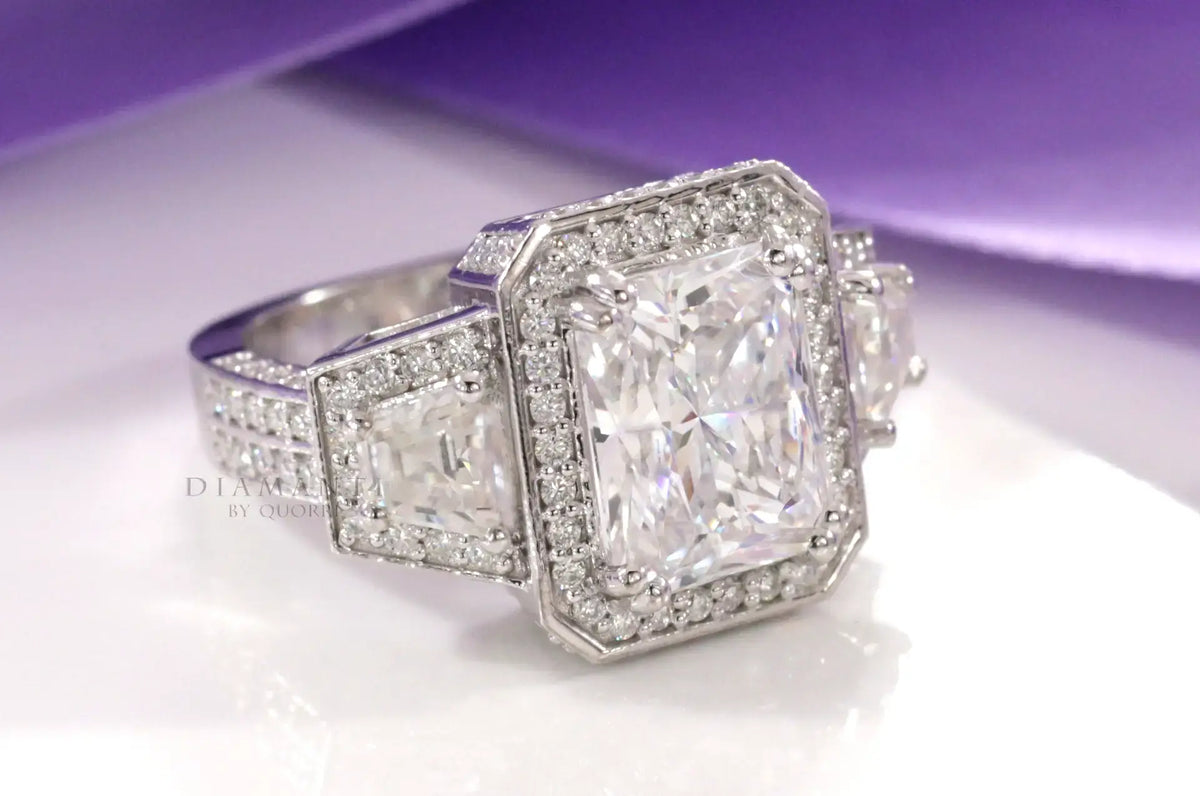
Introduction
Diamonds are more than just sparkling gems; they’re symbols of love, luxury, and timeless beauty. Understanding the differences between mined and lab grown diamonds is crucial for anyone looking to purchase a diamond today.
Mined Diamonds
Formation Process
Mined diamonds are natural wonders formed deep within the Earth’s mantle billions of years ago. The process begins with intense heat and pressure transforming carbon atoms into the hardest natural substance known to man.
Mining Methods
Traditional mining involves extracting diamonds from kimberlite pipes or alluvial deposits through excavation and sorting processes. This method has significant environmental implications due to land disruption and water usage.
Environmental Impact
The environmental impact of mining diamonds includes habitat destruction, soil erosion, and water pollution. It’s a concern that extends to ecosystems and local communities around mining sites.
Ethical Concerns
Beyond environmental impact, ethical issues arise concerning labor practices, human rights violations, and the trade of conflict diamonds funding civil wars in certain regions.
Lab Grown Diamonds
How Lab Grown Diamonds are Created
Lab grown diamonds are cultivated in controlled environments using advanced technological processes that replicate the natural diamond-growing conditions. These methods include High Pressure-High Temperature (HPHT) and Chemical Vapor Deposition (CVD).
Types of Processes
Each production method affects the diamond’s quality and characteristics differently, influencing factors such as clarity, color, and size.
Quality Comparison with Mined Diamonds
Lab grown diamonds exhibit identical physical, chemical, and optical properties to mined diamonds, often surpassing them in purity and brilliance due to controlled conditions.
Environmental Benefits
Compared to mining, producing mined or lab grown diamonds results in significantly lower carbon emissions and less environmental disturbance, offering a sustainable alternative.
Cost Comparison
Factors Influencing Cost
The cost of diamonds is influenced by factors like size, clarity, color, and market demand. Both types of diamonds vary in price based on these factors.
Price Differences
Lab grown diamonds generally cost less than mined or lab grown diamonds of comparable quality, making them an attractive option for budget-conscious consumers.
Value Retention
Historically, mined diamonds have held value due to their scarcity and natural origin, but lab grown diamonds are increasingly gaining acceptance and value retention in the market.
Physical Properties
Hardness and Durability
Both types of diamonds score a perfect 10 on the Mohs scale of hardness, mined or lab grown diamonds, ensuring exceptional durability for everyday wear.
Brilliance and Clarity
Diamonds’ brilliance depends on their cut and clarity, with lab grown diamonds often exhibiting fewer inclusions and superior optical characteristics.
Color Variations
Natural and lab grown diamonds come in various colors, with both types offering a spectrum from colorless to fancy colored diamonds.
Certification and Standards
Certification Bodies
Independent gemological laboratories certify both mined and lab grown diamonds for quality and authenticity, providing assurance to consumers.
Standards for Both Types of Diamonds
Industry standards ensure transparency and ethical practices in diamond production and trade, guiding consumers in making informed choices.
Popularity and Trends
Consumer Preferences
Changing consumer attitudes toward sustainability and ethical sourcing are driving the growing popularity of lab grown diamonds.
Market Growth of Lab Grown Diamonds
The market share of lab grown diamonds is expanding rapidly as technology improves and consumer awareness increases.
Ethical Considerations
Conflict-Free Diamonds
Lab grown diamonds are inherently conflict-free, offering peace of mind to consumers concerned about the origins of their jewelry.
Impact on Local Communities
Supporting ethical practices in diamond production helps protect communities and promote fair labor conditions.
Environmental Impact
Carbon Footprint Comparison
The carbon footprint of lab grown diamonds is significantly lower compared to mining, contributing to a more eco-friendly jewelry industry.
Ecological Effects of Mining vs. Lab Production
Reducing habitat destruction and preserving ecosystems are key benefits of choosing lab created diamonds over mined ones.
Cultural and Symbolic Significance
Historical Importance
Throughout history, diamonds have symbolized wealth, status, and enduring love, contributing to their cultural significance.
Modern Symbolism
Today, diamonds continue to symbolize commitment and celebration, regardless of their origin.
Myths and Misconceptions
Common Misconceptions about Lab Grown Diamonds
Addressing misconceptions like lab grown diamonds being inferior in quality or lacking value compared to mined diamonds.


